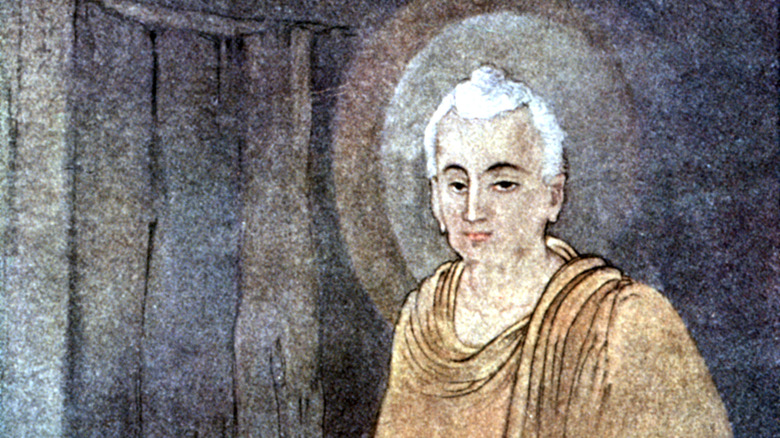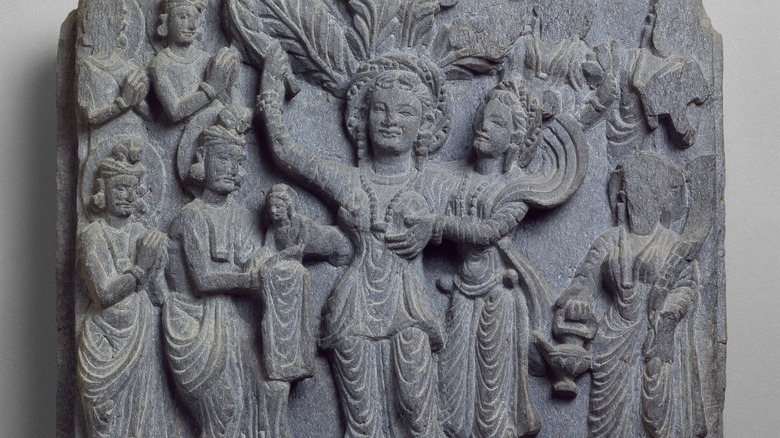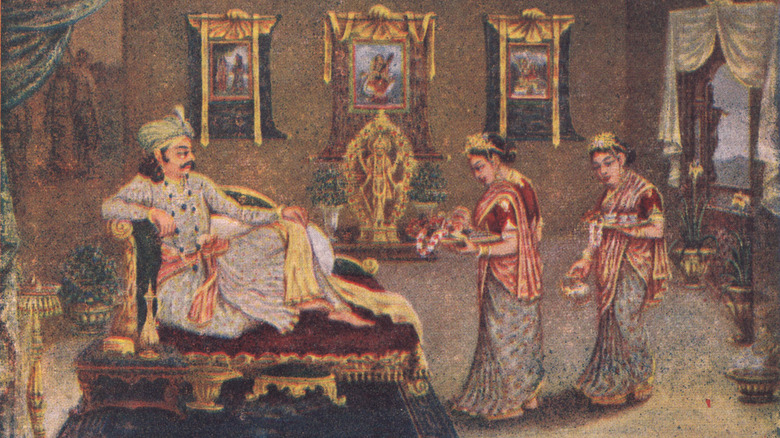Who Were The Buddha's Parents?
The Western world is today familiar with Buddhism as one of the five major religions alongside Christianity, Hinduism, Islam, and Judaism. It is unique among this group as having also permeated popular culture in a way religions more widely practiced in the U.S., for example, could never dream of. As an insightful article titled "Buddhism in Popular Culture," first published in Topic Magazine (via Wise Attention), makes clear, the view of Buddhism as it is experienced by many non-practitioners has been shaped by a series of Western perspectives, which have distorted our view of it as a religion and mystified it. However, some Western sources were hugely instructive. One such influential text when it came to shaping Buddhism in the Western mind was a poem by Edwin Arnold, "The Light of Asia, or The Great Renunciation" which was first published in 1879. "The Light of Asia" is a long narrative work that tells the story of Siddhartha Gautama, the nobleman who would become the Buddha.
In this widely disseminated telling of his life, Gautama is described as coming from a hugely wealthy family, and in many texts is referred to as a prince, whose parents were king and queen of the Shakya clan in Lumbini in the sixth century B.C. His family was exceptionally wealthy, which made his transformation into the Buddha, a religious figure defined by his antimaterialism, all the more remarkable. While Guatama's early life was characterized by luxury, also involved the death of his mother and his father's deception, which would ultimately lead him to rebel and reject the life that his royal lineage laid out for him.
Maha Maya, the Buddha's mother
The Buddha's mother was a woman named Maha Maya, who, as "queen" of the clan of which Siddhartha Guatama's family was the aristocracy, was certainly one of the most important people in the society the future Buddha was born into. However, Buddhist scriptures offer little outside the story of Siddhartha's birth.
According to traditional biographies of the Buddha, his birth was heralded to Maya by vivid dreams. In her sleep, she saw visions of a six-tusked white elephant, which entered her body through her flank. It was through the side of her body that she was also said to have given birth to the Buddha, while standing in a grove of sal trees. Legend has it that Maya died seven days after the birth of her son, which according to Buddhist belief is the fate of all mothers of those who are destined to achieve enlightenment and become a Buddha.
Of course, death in Buddhism doesn't mean the end. As Wendy Garling notes for the Tricycle, after her death Maya becomes a goddess and looks down upon her son from the heavens as he proceeds towards fulfilling his destiny and achieving enlightenment. In some versions of the story of the Buddha, Maya is even visited by him in heaven and descends to Earth to sing to him in his dying moments before he ascends to the afterlife.
Suddhodana, the father of the Buddha
The Buddha isn't a religious figure typically thought of as facing down opponents on his path to fulfilling his destiny and achieving enlightenment. But that is certainly what he did in the early part of his life when he had to overcome the obstacles put before him by his overbearing father, King Suddhodana.
The birth of Siddhartha Gautama was followed by several days of celebrations, during which the baby, who in the Shakya clan was considered a prince, was visited by several mystics. One of these, named Asita, told the king that there were two possible destinies for his progeny. One was to become king, his father's inheritor. But according to Asita, there was also a chance that Siddhartha would become a saint. Suddhodana was disheartened by the idea that his son may not become his successor on the Shakya throne.
When Asita's insight was followed by a prediction by the astrologer Kondanna that Siddhartha was indeed destined for sainthood, Suddhodana decided to prevent his son from leaving the palace. There, he grew to the age of 29 distracted by material possessions and entertainment such as dancing girls, unaware of the realities of sickness, poverty, and death. However, on his 29th birthday, he finally decided to leave the palace, and through three encounters he saw the world as it truly is. Once he had achieved enlightenment, the Buddha returned to the palace, where he discussed the Dharma with his father, who then joined his son on the noble eightfold path.
[Image by Chandra Man Maskey via Wikimedia Commons | Cropped and scaled | CC BY-SA 3.0]


